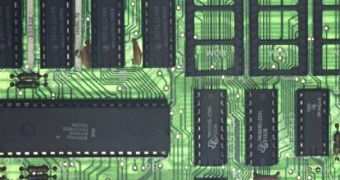Insyde Software and Silicon Storage Technology announced a partnership that may give birth to one really weird piece of technology, a cross between a hybrid disk drive and a media player chip, which is expected to hit the commercial market in its very first form sometime during the next year.
The technology that is now jointly developed by the two companies is called ''FlashMate'' and it pairs the know-how of a firmware developing company, Insyde, with the technical skills of the Silicon Storage Technology company that is specialized in the design and manufacture of low density embedded systems and flash drives.
The FlashMate technology will go for both the hardware and the software layers as it will consist of dedicated central processing unit that runs the Insyde software applications as well as a hybrid hard disk drive developed by SST. According to the news site extremetech the FlashMate technology will be integrated into a number of desktop and mobile computer systems and while the system is powered on and fully operational, the dedicated CPU will act as an additional hybrid hard disk drive controller.
The interesting things start to happed once the computer system is powered off or in a low energy state as the FlashMate technology kicks in and allows users to access the dedicated processing unit that will be able to act like a multimedia player while also having control over the storage sub-system.
"When the [PC] CPU is on, it enhances the FlashMate functionality, and it becomes a hybrid drive," said Yuping Chung, director of Application Specific Controller Products at SST. "When the CPU is off, the FlashMate really shines. It enables a lot of applications that can run when the CPU is off, such as a SideShow secondary display screen, which can play video or play music, or support PDA-like smart functions."
On the hardware side the new technology will come as a 32-bit processing unit alongside a multi chip package unit that will offer access to the high speed USB ports, hard disk drives and optical units, while also being able to run a variety of software applications. Executives from the two companies said that this new technology will be marketed to computer systems integrators once it is finished and other interested parties.

 14 DAY TRIAL //
14 DAY TRIAL //